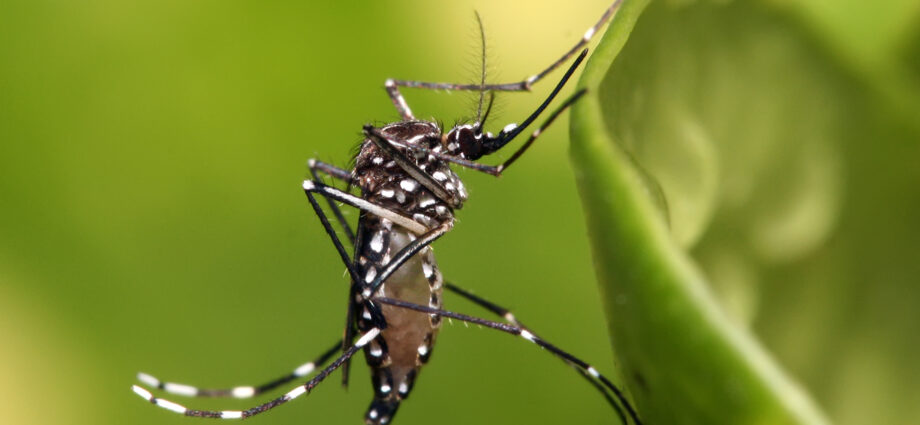
By Dann Okoth
January 15, 2025
[NAIROBI] A genetic biocontrol method which reduces the lifespan of female insects could work as fast as pesticides to reduce populations of disease-spreading mosquitoes and destructive crop pests, according to researchers.
Insect pests pose a huge threat to global health and agriculture, causing hundreds of thousands of deaths, millions of infections, and costing billions in healthcare and crop damage each year.
Biocontrol is increasingly seen as a viable alternative to pesticides, which can harm non-target species and ecosystems and are losing efficacy as resistance to them grows.
A new approach called Toxic Male Technique (TMT), developed by researchers at the ARC Centre of Excellence in Synthetic Biology at Macquarie University, Australia, involves genetically engineering male insects to reduce the lifespan of the females they mate with.
Researchers say it can be used to respond rapidly to outbreaks of agricultural pests as well as to fight mosquito-borne diseases such as malaria, dengue and Zika.
“We hold that our technology has the potential of working as fast as pesticides without the attendant risks of harming other species and the environment,” says Samuel Beach a researcher in applied biosciences at Macquarie University and lead author of the study, published today in Nature Communications.
According to Beach, the approach is more efficient than existing methods such as the Sterile Insect Technique or the release of insects carrying lethal genes, which work by releasing masses of sterilised or genetically modified males to mate with wild females.

With these techniques, the mated females produce no offspring or only male offspring, but they continue to blood-feed and spread disease until they die naturally — meaning populations of biting females only decrease when the next generation emerges.
“TMT is cheaper because you need fewer males to get much faster reduction in insect population or spread of diseases,” Beach explains.
Venom proteins
The new technique works by genetically engineering male insects to produce insect-specific venom proteins in their semen. When these males mate with females, the proteins are transferred, significantly reducing the females’ lifespan and their ability to spread disease.
The researchers found that mating females with the genetically engineered males reduced their lifespan by 60 per cent.
“Ideally, we’re looking at 100 per cent reduction in lifespan—that’s the females die as soon as they mate with the male,” Beach told SciDev.Net. “But that’s what we want to achieve long term, that’s going to take some time.”
Even the 60 per cent reduction could go a long way towards reducing the impact of mosquito-borne diseases, he adds.
Diseases such as malaria, dengue, Zika, chikungunya and yellow fever are spread by the females of the Aedes aegypti and Anopheles gambiae species of mosquito.
Beach explains that when female mosquito blood feeds, contracting the virus from a host, she is not infectious for a couple of days. For a period of five to ten days, she cannot spread the disease to another person.
“That means we don’t need to achieve 100 per cent mortality, we just need to reduce her lifespan within this period of time where she can’t spread that disease to a second person, which we estimate to be about 60 to 80 per cent reduction in lifespan,” says Beach.
The technology could work even better for farmers, according to the researchers, since crop pests have longer lifespans than mosquitos—up to a year or two, compared to three to four weeks.
“Because the generational term is so long, if we can kill the female sooner that’s going to have a much bigger benefit for agricultural pests,” adds Beach.
Operational costs
Tonny Owalla, a researcher at Med Biotech Laboratories Kampala, Uganda, who was not involved in the study, believes engineering male mosquitoes to reduce the population of female malaria carriers could be a useful approach.
However, he cautions that the costs of deploying it may make the technology impractical for routine use in malaria endemic countries.
“Take for instance, how many male mosquitoes one would deploy in the Democratic Republic of the Congo, which is the leading malaria endemic country in Africa, how many rounds of release per year, infrastructure, source of mosquito supply…” says Owalla.
Beach says the technology must go through rigorous safety tests before being adopted, while regulatory frameworks to guide its use and infrastructure to breed mosquitoes are also needed.
“In a few a few years, though, we are certain our technology will provide millions of people across the world with a sustainable solution for disease and crop pest control,” he adds.
This piece was produced by SciDev.Net’s Global desk.
Subscribe to our newsletter.
This article was originally published on SciDev.Net. Read the original article.

